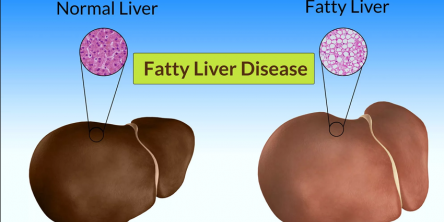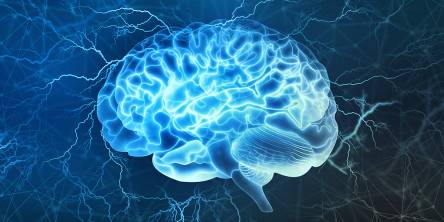6 Signs Your Heartburn Could Signal a More Serious Condition

That scorching, uneasy feeling in your chest? It most likely was heartburn. Heartburn is a relatively prevalent condition that many individuals experience for a variety of reasons. It happens when stomach acid leaks out and irritates the esophagus's fragile lining.
Over-the-counter antacids are a common solution for the problem, which is typically brought on by eating particular foods or just overeating. However, heartburn can also be a sign of more serious issues that need additional treatments. Here are a few signs that you should probably see a doctor for your heartburn:
1. Frequently recurring or persistent heartburn
You may have gastroesophageal reflux disease (GERD) if you get heartburn often or constantly (over two times a week or daily). GERD, a digestive disorder, affects the lower esophageal sphincter (LES), a muscle that connects the esophagus to the stomach. If you get heartburn frequently, you should see a gastroenterologist.
When the LES is functioning properly, it acts as a barrier to stop gastric acid from flowing into the esophagus. But, if the LES is compromised or not working properly, gastric acid may enter the esophagus, resulting in recurrent heartburn. Barrett's esophagus is a significant problem that can develop as a result of GERD over time. Due to prolonged exposure, Barrett's esophagus is characterized by gastric acid altering the esophageal cells. Esophageal adenocarcinoma, a potentially lethal cancer, can develop from these damaged cells.
An endoscopy, a procedure in which a lighted scope is put into the esophagus to inspect the digestive tract, may be carried out by your doctor if GERD is suspected.
2. Abdominal pain
You could have gastritis if you also have excruciating bloating or stomach discomfort in addition to heartburn. The condition known as gastritis, which is an inflammation of the stomach lining, can be brought on by bacteria, an infectious disease, persistent vomiting, heavy alcohol consumption, or nonsteroidal anti-inflammatory medicines like aspirin or ibuprofen. An endoscopy will help reveal the extent of damage to your stomach lining.
3. Hiccup or cough
A persistent cough or hiccup can be caused by a hiatal hernia, a condition in which a part of the stomach pushes through a hole in the diaphragm. The diaphragm, a muscle located between the chest and the abdomen, is vital for breathing because when it contracts, it expands your lungs, allowing you to inhale. In addition, the esophagus enters through a small hole. The stomach can flow through this opening and cause severe heartburn, chest or abdominal discomfort, nausea, vomiting, and shortness of breath, among other symptoms.
4. Difficulty swallowing
If you experience heartburn along with swallowing difficulties or pain, you may have esophagitis. Esophagitis is an esophageal tissue inflammatory condition that is frequently brought on by GERD. Your doctor may prescribe an endoscopy to examine the extent of the esophageal lining damage if esophagitis is suspected.
5. Nausea or vomiting
Vomiting and nausea might indicate esophagitis, hiatal hernia, or GERD. Any of these disorders may result in the regurgitation of the stomach's contents. This regurgitation often leaves a "sour taste," which makes some patients nauseous or unable to eat. Extreme sickness or vomiting might indicate a heart attack, which is a life-threatening medical emergency.
6. Extreme chest pain or pressure
Seek emergency medical attention if you have significant chest pain or pressure, particularly if it goes hand in hand with jaw, neck, or back pain, nausea, vomiting, or trouble breathing. There could always be a risk of a heart attack.
The bottom line
Heartburn is a frequent issue that is typically not dangerous, but it may indicate a more serious medical condition. Contact your doctor to explore treatment options or to ask for more testing if your heartburn is persistent or is interfering with your everyday activities.
Similar Articles
We often experience small discomforts or symptoms that seem insignificant, like headaches, fatigue, or brittle nails. Many times, we brush them off, thinking they’ll go away on their own. However, these minor issues might be your body’s way of telling you that something more serious is going on.
According to the World Health Organization (WHO), half to three-quarters of adult persons globally experienced a headache in the past year. Unfortunately, tension headaches are one of the most prevalent symptoms you can have. Furthermore, some tension headaches resemble migraine headaches, making matters worse.
The review of Yakrit Plihantak Churna is going to be amazing. You will know the facts, does it works along its benefits. The liver is the main engine of the body. It is the second largest gland in the body.
A podiatrist is a doctor who focuses on treating foot and ankle ailments. If you have specific medical issues, you may need to see a podiatrist for therapy that your primary doctor cannot offer. Don't overlook pain in your lower leg, foot, ankle, or toes.
A podiatrist is a medical expert who focuses on foot and ankle care. There are various reasons you may need to see one.
Swelling is a common issue that can strike anyone. Occasional leg swelling may occur after a long day on your feet or from sitting too long. However, if your legs are regularly swollen, it could indicate a serious underlying condition. Swelling can cause leg pain, loss of sensation, redness, and itching. If left unmanaged, it can lead to stiffness and difficulty walking.
Choosing the best aesthetic medicine courses will significantly boost your career. Medical professionals looking to expand their practice and stay ahead in the field of aesthetic medicine will find these training programs invaluable
Lower back pain is like a storm gathering over the horizon all day. The dull discomfort, the throbbing feeling, and the stiffness all add up until, like a thunderclap, it explodes into full-fledged pain. It penetrates your whole body, removing choice and control. Your mobility is restricted, making daily tasks difficult, and if not addressed, it can cause permanent damage.
Even though migraine affects over one billion people around the world, it has long been neglected as one of the most devastating diseases on the planet. Migraine headaches are a neurological disorder characterized by recurrent pounding or throbbing headaches, nausea and vomiting, and sensitivity to light, sound, and strong odors









